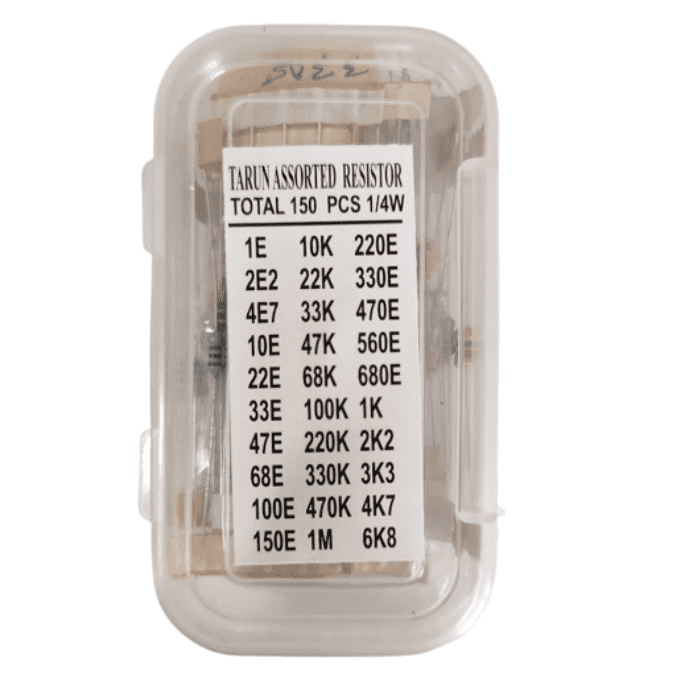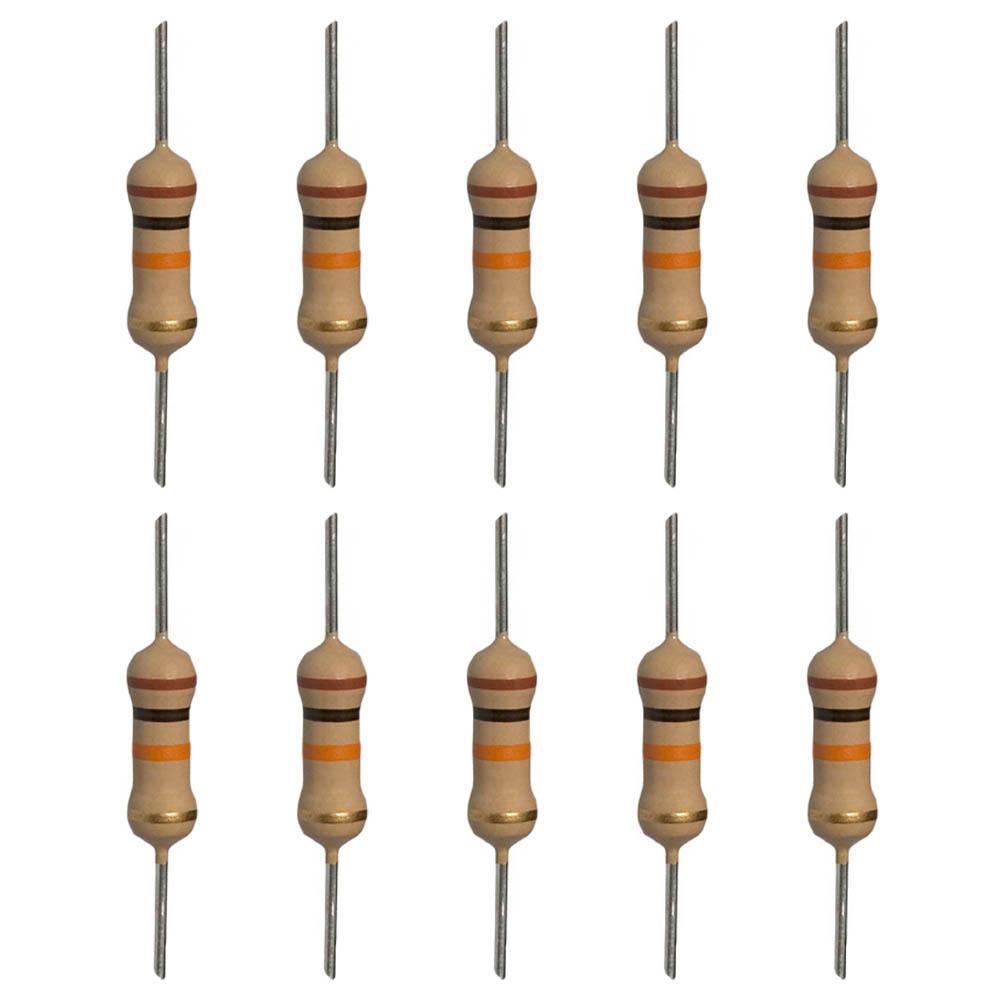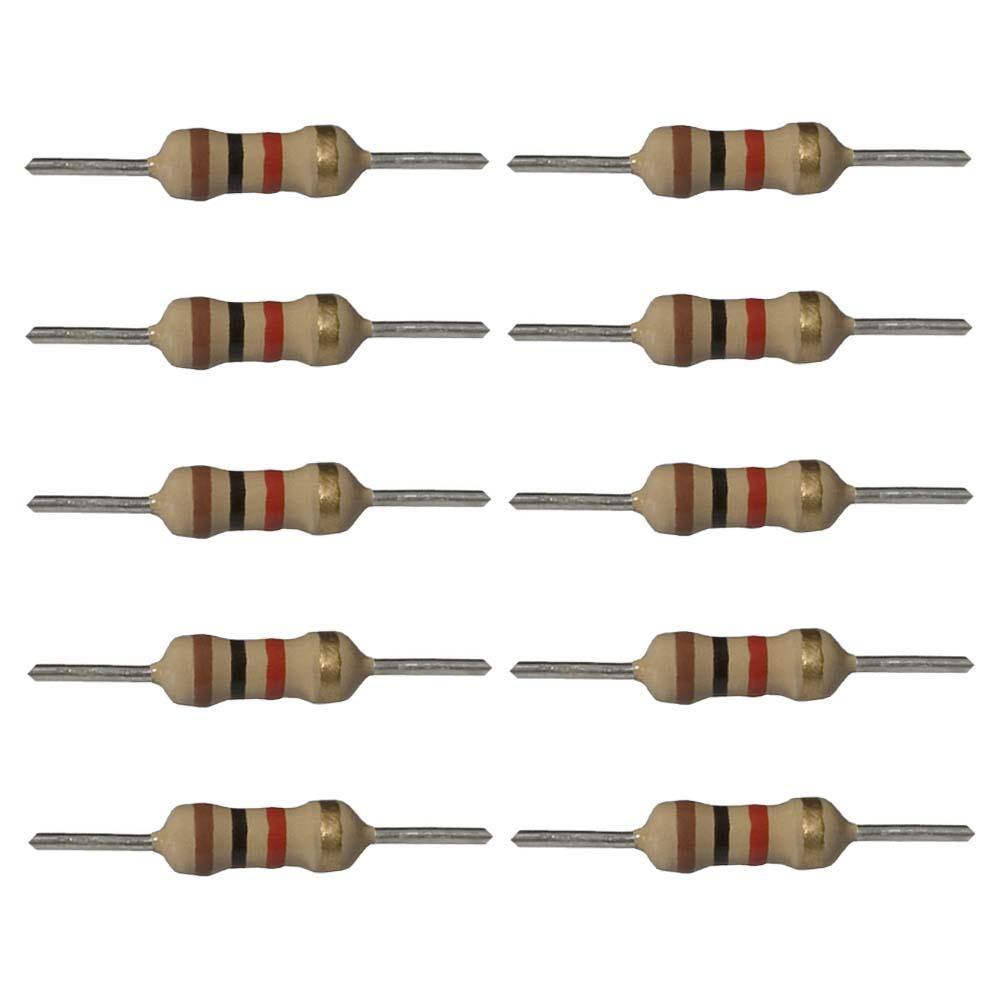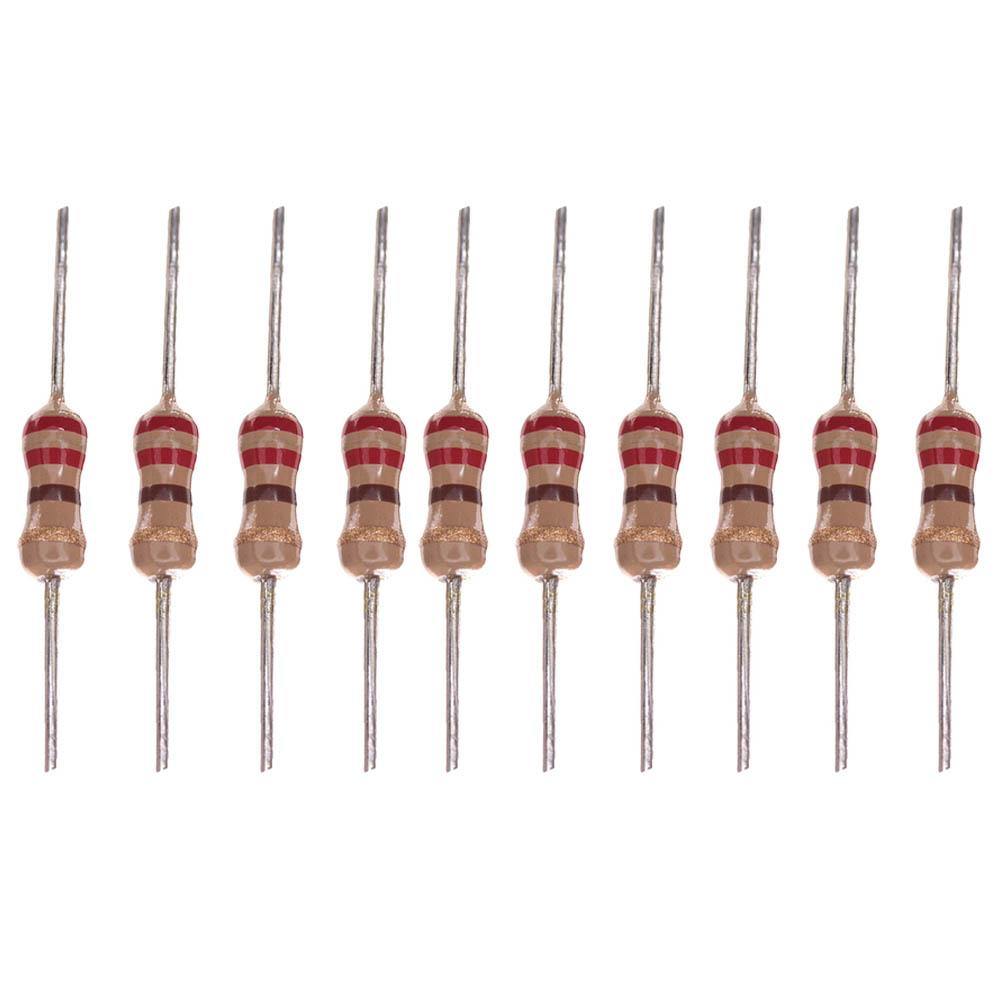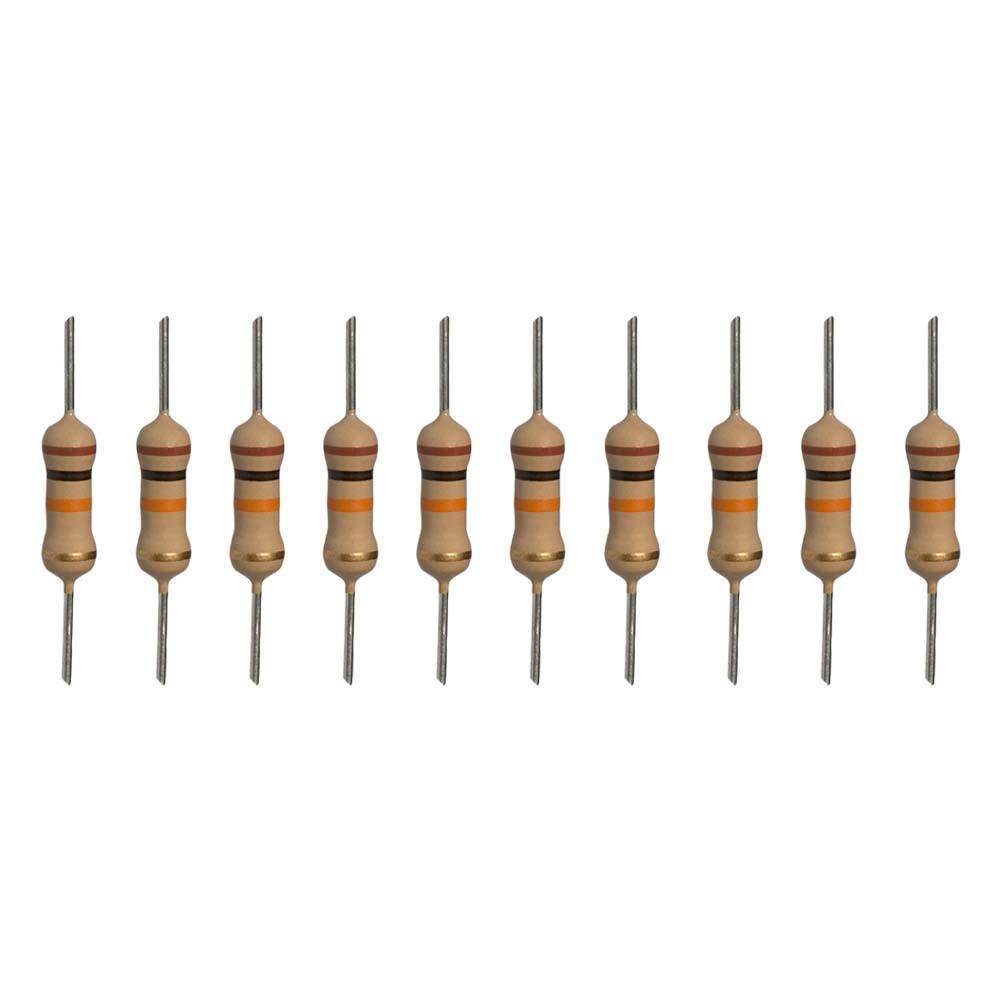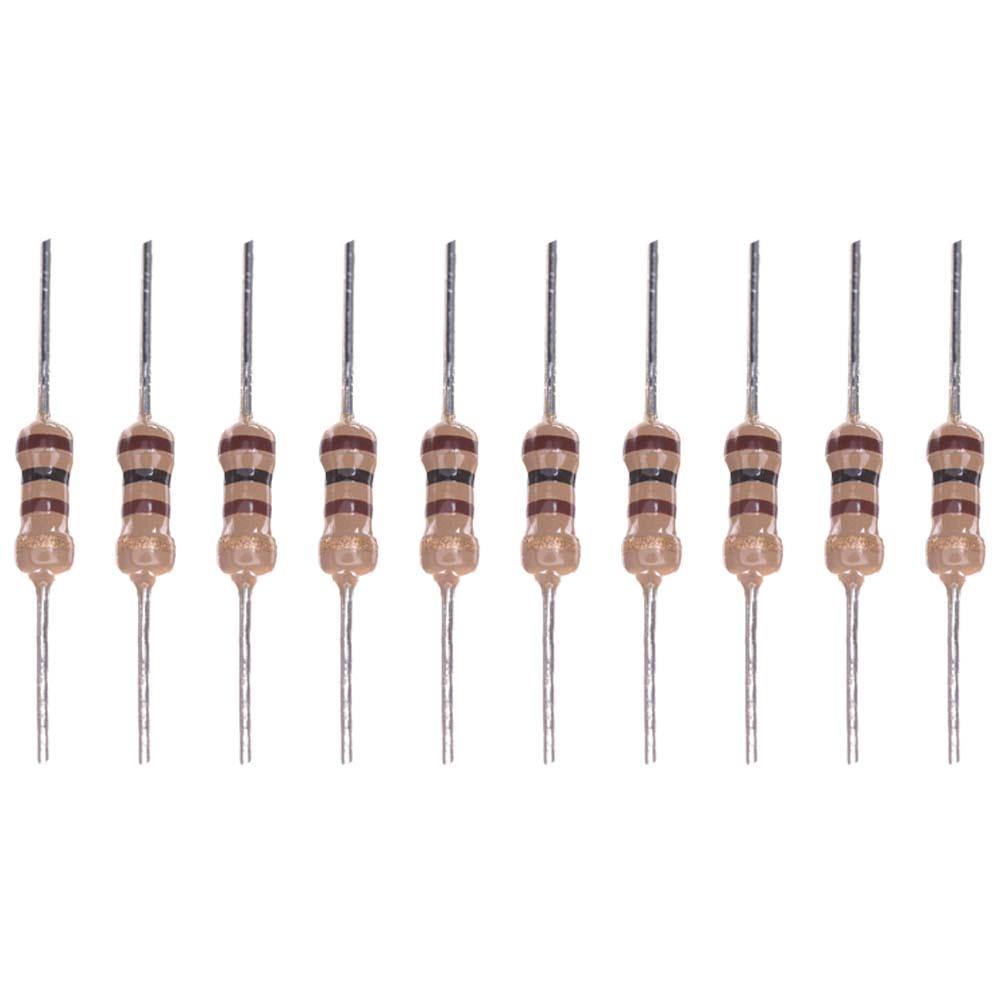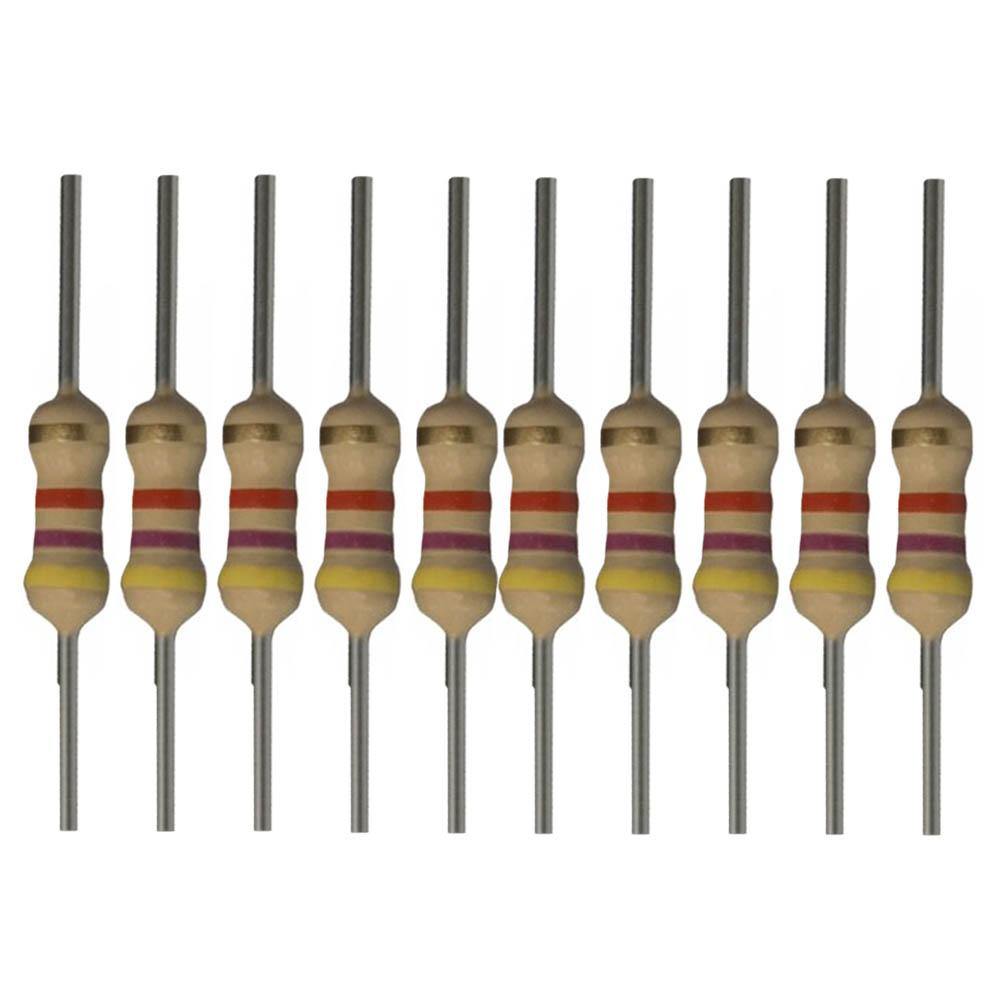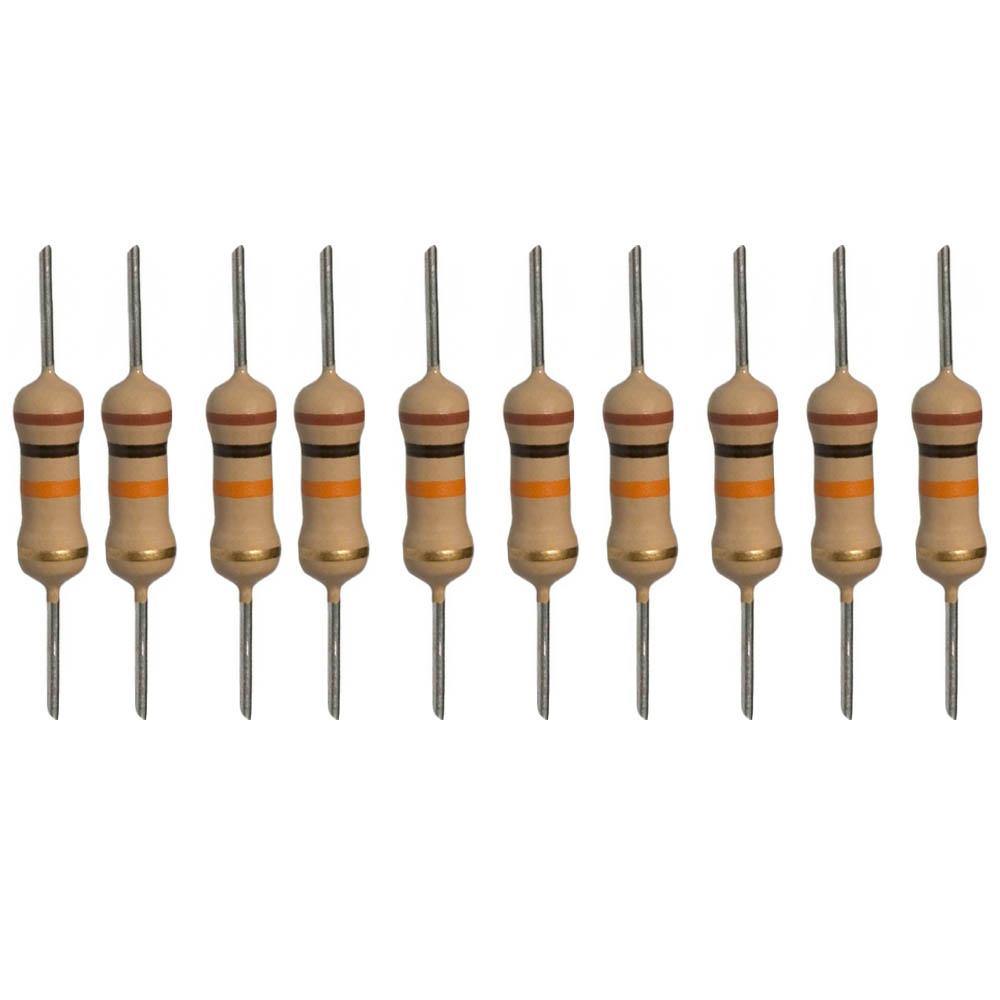Introduction
Welcome to the intricate world of resistor power ratings and their pivotal role in the realm of electronic devices. In this chapter, we embark on a journey to unravel the nuances of understanding resistor power ratings and delve into their profound significance.
Understanding Resistor Power Rating
Resistor power rating, at its essence, refers to the maximum power a resistor can dissipate without succumbing to damage. Picture it as the threshold that separates optimal functionality from potential overheating and degradation. The implications of a resistor's power rating extend far beyond its numerical value; it's a critical determinant of an electronic device's safety and efficiency.
Definition: The resistor power rating is the maximum power, measured in watts (W), that a resistor can handle without adverse effects.
Significance: It serves as a safeguard, preventing resistors from overheating, changing resistance values, or suffering physical damage.
Importance in Electronic Devices
Performance Stability: A resistor operating within its power rating ensures stability, preventing erratic behavior and maintaining the device's intended performance.
Safety Assurance: Beyond performance, adhering to power ratings is crucial for preventing safety hazards, ensuring devices function reliably without risking damage or malfunctions.
As we transition into the intricacies of PCB design, it's imperative to recognize the integral relationship between resistors and PCB efficiency. The interplay between these elements holds the key to both the safety and reliability of electronic circuits.
Circuit Backbone: Resistors form the backbone of any electronic circuit, influencing its functionality and performance.
Collaborative Dynamics: Understanding how resistors integrate with the broader PCB design is essential for optimizing circuit behavior.
Impact on Safety and Reliability
- Safety Net: Resistor power ratings act as a safety net within PCBs, preventing catastrophic failures and maintaining the overall reliability of electronic systems.
- Efficiency Enhancement: Proper integration of resistors in PCB design contributes to enhanced efficiency, a crucial factor in the rapidly evolving landscape of electronic devices.
Now, we will dive deeper into the intricacies of resistor power ratings, exploring their variations, influencing factors, and the direct impact they have on PCB design. Buckle up as we uncover the secrets behind these electronic workhorses.

Resistor Power Rating
Shedding light on the fundamental aspects that constitute their definition, unit of measurement, and how they manifest through indications on resistors.
Resistor power rating is a critical parameter, encapsulating the maximum power a resistor can handle before potential damage or performance degradation. Understanding the nuances begins with a grasp of the following key elements:
- Definition: Resistor power rating signifies the upper limit of power, measured in watts (W), that a resistor can dissipate safely during operation.
- Unit of Measurement: The watt (W) serves as the standard unit, expressing the power rating numerically. This metric is a pivotal factor in gauging a resistor's robustness.
Resistors often bear markings that provide vital information regarding their power rating. These indications, commonly denoted by a numerical value followed by the unit "W" on the resistor body or datasheet, communicate the resistor's capacity to handle power. For instance, a resistor labeled as 1/2 W can effectively dissipate up to 0.5 watts of power.
Power Rating Variations
Moving beyond the basics, we delve into the diverse landscape of power ratings, exploring how variations impact resistors and the implications these differences carry.
Resistors come in an array of power ratings, ranging from fractions of a watt (e.g., 1/8 W or 1/4 W) to several watts. Each power rating corresponds to the resistor's ability to manage heat dissipation. Understanding the implications of these variations is crucial for optimal resistor selection in diverse applications.
To illustrate the practical significance of power ratings, we showcase examples of resistors across the spectrum. From low-power resistors suitable for delicate electronic components to high-power resistors designed for robust industrial applications, the examples highlight the diverse landscape of power ratings in the resistor realm.
Selecting the Right Power Rating

With a foundational understanding of resistor power ratings, the chapter concludes by exploring the importance of selecting the appropriate power rating for specific applications and the considerations that guide this selection process.
Different applications demand different power ratings based on the power levels the resistors will experience. Selecting a resistor with a power rating higher than the anticipated maximum power ensures reliable operation without risking overheating or damage.
Factors such as the ambient temperature, thermal management, and neighboring components play a pivotal role in the selection process. A strategic approach to resistor selection involves evaluating these factors to ensure the chosen resistor can effectively handle the power dissipation requirements of the application.
Now, we will continue our exploration of resistor power ratings, uncovering the factors that influence them and their profound impact on PCB design.
Factors Influencing Resistor Power Rating
Exploring the relationship between physical size and power rating, the impact of temperature coefficient, the role of material and composition, and the significance of ambient temperature in the context of heat dissipation.

Physical Size
The size of a resistor plays a pivotal role in determining its power rating, creating a nuanced relationship that directly affects performance and reliability.
Surface Area Dynamics: Larger resistors boast a higher surface area, allowing for enhanced heat dissipation. This increased surface area facilitates the effective management of power, contributing to a higher power rating.
Heat Dissipation Efficiency: Smaller resistors, such as surface mount resistors, typically exhibit lower power ratings due to their limited size, resulting in constrained surface area and, consequently, diminished heat dissipation efficiency.
Temperature Coefficient
Temperature coefficient, a defining characteristic of resistors, unfolds as a critical factor influencing both heat generation and the overall power rating.
Temperature-Responsive Resistance: Resistors with higher temperature coefficients generate more heat for a given power dissipation. This increased heat generation influences the resistor's ability to manage power effectively.
Lowering Power Rating: Resistors with higher temperature coefficients may necessitate a lower power rating to prevent overheating. Balancing the temperature coefficient with the power rating is crucial for optimal resistor performance.
Material and Composition
The material used in crafting resistors is not merely a construction detail but a significant factor influencing thermal conductivity and, subsequently, the power rating.
Material's Impact: Resistors made of materials with higher thermal conductivity exhibit superior heat dissipation capabilities, resulting in elevated power ratings.
Diverse Material Landscape: Different resistor materials possess varying thermal properties. The choice of material can significantly impact a resistor's ability to handle power, necessitating a thoughtful selection process.
Ambient Temperature and Heat Dissipation
The ambient temperature surrounding a resistor emerges as a critical external factor, intersecting with proper heat dissipation methods for sustained performance.
Heat Dissipation Challenges: High ambient temperatures can challenge a resistor's ability to dissipate heat effectively, potentially leading to a reduced power rating to prevent overheating.
Enhancing Thermal Management: Strategic measures, such as mounting resistors on heat sinks or utilizing thermal pads, play a crucial role in enhancing heat dissipation and, consequently, boosting the resistor's effective power rating.
Now, we will continue our exploration, shifting our focus to the direct impact of resistor power ratings on PCB design, thermal dissipation, and strategies for reliability enhancement.
Resistor Power Rating in PCB Design
The critical role of resistor power ratings within the realm of PCB design, emphasizing the direct impact on thermal management and the overarching importance for ensuring overall reliability.

Role of Resistor Power Rating
Understanding the significance of the resistor power rating within PCB design unveils its instrumental role in two key aspects: direct influence on thermal management and its critical importance for ensuring the reliability of the entire system.
- Heat Dissipation Dynamics: The power rating of a resistor directly dictates its ability to dissipate heat during operation. Higher power ratings contribute to efficient heat dissipation, preventing temperature escalation that could compromise the functionality of surrounding components.
- Thermal Stability: Proper thermal management, facilitated by selecting resistors with suitable power ratings, ensures that the PCB operates within optimal temperature ranges, mitigating the risks associated with overheating and subsequent performance degradation. #### Importance for Overall Reliability
- Preventing Failure: Resistor power ratings act as a safeguard against potential failures within the PCB. Choosing resistors with power ratings appropriate for the application prevents scenarios where resistors may exceed their limits, leading to malfunctions or permanent damage.
- Enhancing System Longevity: The reliability of the overall system is inherently linked to the judicious selection of resistors with suitable power ratings. This proactive approach contributes to prolonged system longevity and reduced maintenance requirements.
Thermal Dissipation
This section delves into the intricate relationship between resistor power ratings and thermal dissipation, elucidating how the former influences the latter and the potential issues that may arise with inadequate heat management.
- Power Dissipation Limits: The power rating defines the upper limit of power a resistor can handle without adverse effects. Understanding this limit is crucial for designing circuits that effectively manage the dissipation of heat generated during operation.
- Matching Power Ratings: Ensuring that the power rating aligns with the actual power dissipation requirements of the application is paramount. Mismatched power ratings can lead to inadequate heat dissipation, compromising the stability of the entire PCB
- Performance Degradation:** Resistors operating beyond their power ratings risk overheating, resulting in changes to their resistance values and potentially compromising the performance of the entire circuit.
- Physical Damage: In extreme cases, prolonged exposure to excessive heat can lead to physical damage to the resistor and neighboring components, posing a significant threat to the overall integrity of the PCB.
Temperature Rise and Derating Guidelines
Now, we delve into the critical aspects of temperature rise and the implementation of derating guidelines, pivotal for ensuring the reliability of resistors in the context of PCB design.
- Operational Heat Generation: Resistors inherently generate heat during operation due to the flow of current. Understanding the factors contributing to this heat generation is crucial for predicting temperature rise.
- Influence of Power Dissipation: The power dissipated by resistors plays a central role in temperature rise. Higher power dissipation correlates with elevated temperatures, necessitating a thorough comprehension of these dynamics.
- Reaching Thermal Equilibrium: Resistors tend to reach thermal equilibrium during continuous operation, where the heat generated equals the heat dissipated. A balanced approach is necessary to maintain stable operating temperatures.
- Impact on Longevity: Extended periods of temperature rise beyond specified limits can compromise the longevity and reliability of resistors, underscoring the importance of effective thermal management.
- Derating Defined: Derating involves operating a component below its maximum rated parameters to enhance reliability and prevent premature failure. For resistors, this entails applying less than the rated power to mitigate risks.
- Temperature Derating: Linking derating to temperature, especially in the context of resistors, involves adjusting the power handling capacity concerning the ambient temperature. This adaptive approach minimizes stress on the components.
- Ambient Temperature Variations: Derating becomes particularly relevant in environments with fluctuating temperatures. Adapting resistor power ratings based on ambient temperature variations is essential for maintaining stability.
- System-Specific Considerations: Derating guidelines should align with the specific requirements of the electronic system. Factors like criticality, application demands, and reliability expectations influence the extent of derating applied.
PCB Layout Considerations
Transitioning to PCB layout considerations, we explore the intricate relationship between resistor power ratings and the overall layout, along with strategies for effective thermal design.
- Strategic Placement: Proper placement of resistors within the PCB layout influences heat dissipation. Strategic positioning, considering power ratings, helps distribute heat evenly across the system.
- Minimizing Hotspots: Thoughtful integration of resistors in the layout minimizes localized hotspots, contributing to a more uniform temperature distribution. This, in turn, enhances the reliability of the entire PCB.
Reliability Enhancement
We shift focus to reliability enhancement strategies, emphasizing the imperative of improving long-term performance while mitigating the risk of resistor failure.
- Enhanced Material Selection: Opting for materials with superior thermal conductivity and stability enhances the long-term performance of resistors. This proactive choice minimizes the impact of prolonged operational stress.
- Advanced Manufacturing Processes: Incorporating advanced manufacturing techniques ensures the production of resistors with precise specifications, reducing the likelihood of deviations that could compromise long-term reliability.
- Real-time Monitoring Systems: Implementing real-time monitoring systems allows for the early detection of anomalies in resistor performance. Timely intervention based on monitoring data significantly reduces the risk of failure.
- Continuous Testing Protocols: Establishing continuous testing protocols during the manufacturing and operational phases acts as a proactive measure, identifying potential issues before they escalate into critical failures.
Now, we will revisit the core principles highlighted in this chapter, drawing connections with the broader context of PCB design and underscoring the interplay between resistor power ratings, temperature dynamics, and reliability considerations.
Conclusion
As we draw the curtain on this exploration into the intricate realm of resistor power ratings and their symbiotic relationship with PCB design, let's recapitulate the pivotal insights garnered throughout our journey.
The resistor power rating serves as a foundational pillar in the domain of electronic devices and PCB design. Its significance lies in the ability to withstand and dissipate heat generated during operation.
Beyond its technical intricacies, the power rating is integral to the safety and reliability of electronic systems. A nuanced comprehension ensures optimal performance and longevity, safeguarding against potential failures.
Resistor power ratings vary, and each variation carries specific implications. Tailoring resistor selection to the demands of the application is paramount for optimal performance.
Diverse factors, including physical size, temperature coefficient, material composition, and ambient temperature, collectively influence the power rating. Addressing these factors strategically is central to effective PCB design
Resistor power ratings play a direct role in thermal management within PCBs. Understanding their impact on temperature rise, derating guidelines, and layout considerations is instrumental in achieving reliability.
Tailor resistor selection to the specific demands of the application. Consider the power dissipation requirements, ambient conditions, and the criticality of the electronic system.
Strike a balance between the physical size of resistors and their power ratings. Optimize surface area for enhanced heat dissipation while meeting power handling demands.
Integrate resistors strategically within the PCB layout to ensure uniform heat dissipation. Minimize hotspots and foster a balanced thermal environment for sustained reliability.
Implement real-time monitoring systems to track resistor performance. This proactive approach allows for timely interventions, reducing the risk of failure and enhancing long-term reliability.
The journey through resistor power ratings unfolds as a dynamic interplay of technical intricacies and practical considerations. Armed with a comprehensive understanding, PCB designers are empowered to navigate the complexities of electronic systems with precision, ensuring not only functionality but resilience in the face of diverse operational challenges. As you embark on your PCB design endeavors, may these insights serve as a compass, guiding you towards the zenith of efficiency, safety, and reliability.




